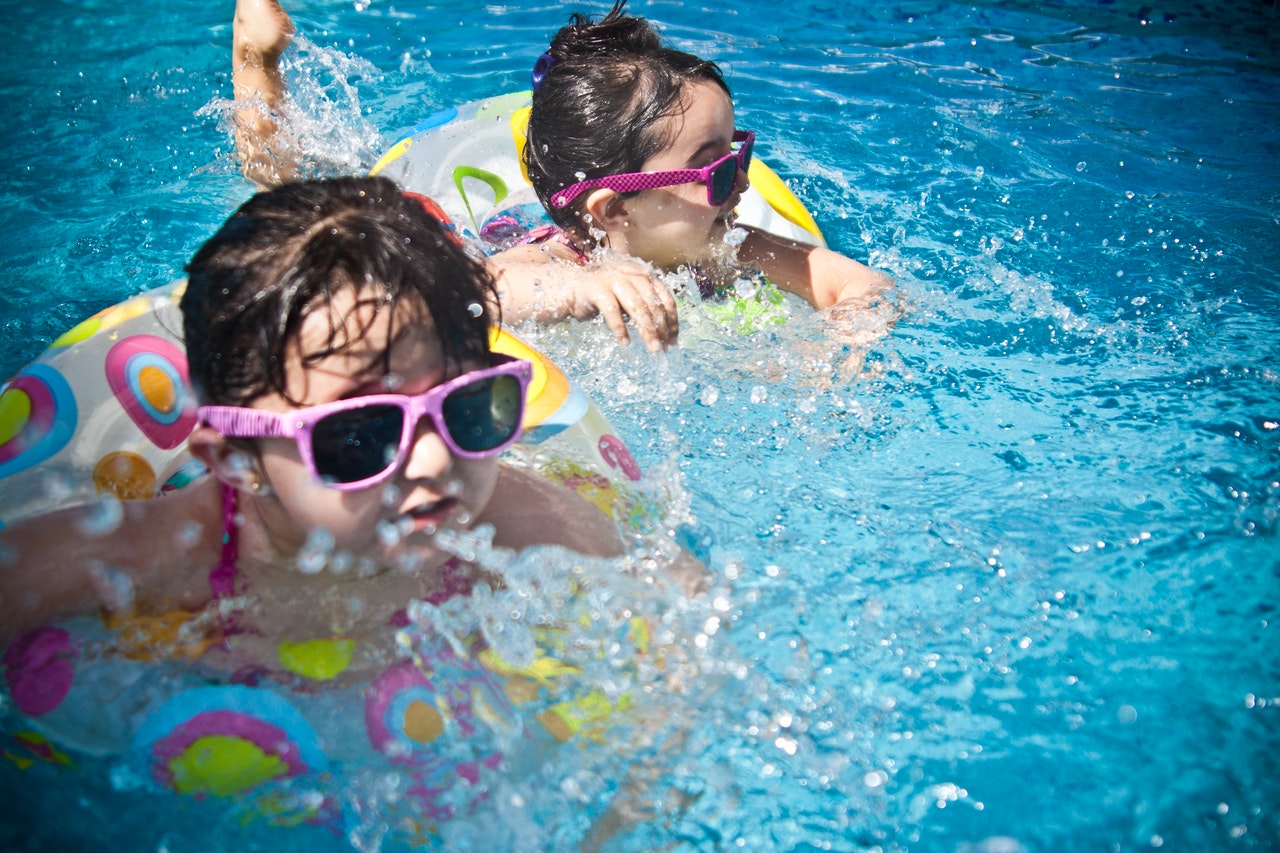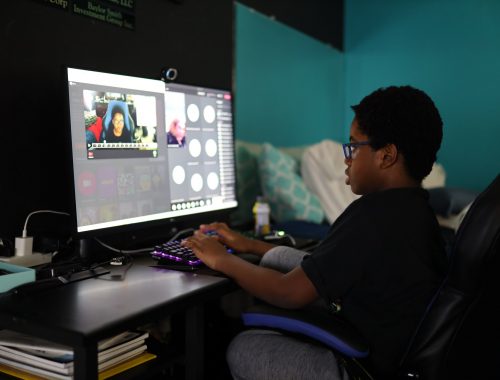
What Every Parent Should Know About Their Kids Swim Lessons?
Walk, run, crawl, or swim. This is the sequence in which parents should consider their child’s physical milestones, regardless of whether they are seasoned lap swimmers or still have a deep-seated fear of the water. Survival in the water is one of the most crucial life skills. And swimming lessons are where it all begins, from learning to float to treading water to your typical pool workout to clocking a 23-second, 50-meter freestyle and taking home the gold.
However, enrolling your children in swimming classes is not as simple as teaching them to walk. Does it make sense to begin when they are 9 months old? How frequently ought they to take lessons? When will they have had enough instruction? Parents may feel confused and overwhelmed by the plethora of alternatives available when it comes to their children’s swimming training. I’ve heard them all as a youth instructor and collegiate swimming coach. This is the reason I’ve compiled a list of the top 15 queries parents have concerning swimming classes, along with some advice on how to start youngsters on the road to water competency.
1. When ought my kid to begin swimming lessons?
Though most Swimjourney doctors advise waiting until your child is at least a few months old, it’s never too early to introduce them to the water. And while it’s acceptable to take the lead in the lessons at first if you’re an experienced swimmer, think about parent-child swimming lessons if you don’t have access to a pool or aren’t very comfortable in the water. They frequently accept children as early as six months old. Most children should be prepared for more formal teaching by the age of four. Preschoolers are actually learning so much every day, so it seems sense to include swimming in their ever-expanding repertoire of physical abilities.
 2. How much are swimming lessons?
2. How much are swimming lessons?
Depending on where you reside and the caliber of the teachers, swimming lessons might cost a lot of money. Private classes are rarely found for less than $20 per session, and they sometimes cost up to $40 each lesson. Similar to private classes, group lessons typically cost $15 to $30 each session. Occasionally, enrolling a second child or purchasing multiple lessons at once can reduce the cost.
3. How long do swimming lessons typically last?
Lessons usually last 30 minutes. When lessons last too long, kids frequently become chilled and lose concentration. Additionally, if the list of skills to practice is limited and the youngsters are just learning to swim, the lesson will quickly become repetitious.
4. Which type of lessons—private or group—should my kid take?
Consider this: Will my child concentrate in a group or will they be the ones to stop the other children from learning? There are additional safety issues to take into account. You must be sure that your child will actually sit on the edge of the pool when instructed to do so because a teacher cannot supervise every child at once. A group lesson can give some students the necessary, constructive peer pressure they need to be adventurous. On the other hand, some people would rather practice in private.
Think about the following when planning your lessons: A group lesson is an excellent choice if you’re searching for a water activity where they can interact with other kids their age. Private courses are most likely the best option if you’re seeking for more intensive teaching so they can advance more quickly. Alternatively, if your kid is at the same ability level as a peer, they might like going swimming with them. It would be more cost-effective for you and the other parent to schedule a private lesson for both of them.
5. From where can I get my kid swimming lessons?
Swimming classes are almost always offered by YMCAs, and they’re a terrific place to start regardless of where you reside. There’s a strong possibility that your city’s community pool will provide lessons over the summer if you reside there. Additionally, instruction in private pools is common. However, the local college is one place where the majority of parents don’t think to look. In the fall and spring, the majority of collegiate swim teams provide instruction to all age groups, frequently as a means of team fundraising. Therefore, you can be lucky if you reside close to a college campus. Finally, year-round possibilities are available at increasingly well-liked swim schools like Aqua-Tots, Goldfish, and SwimLabs.
6. How many swimming lessons should my child take?
Giving youngsters a few lessons to review at the start of the summer is a great idea. They’ll probably require some instruction on how to maintain their composure, swim effectively, or switch between abilities and strokes. When it comes to water safety, even a youngster who was swimming successfully at the end of the previous summer can benefit from a check-in. Before diving back in for another summer of fun, they can brush up with an early lesson. Otherwise, provided they’re still having fun and making progress, you should keep a child in lessons until they’ve accomplished whatever objective you set for them at the beginning.
7. How often ought my kid to take swimming lessons?
When it comes to learning to swim, consistency is crucial. It is much preferable to have a child swimming frequently (think once a week for several months) than to have them take swimming classes for one week straight and then stop, or to only take them swimming sometimes. The majority of programs have one to three weekly meetings that last between three and six weeks. And as one might anticipate, the longer the gap between lessons, regardless of how much progress a child makes in a particular lesson, the more probable it is that they will forget what they learned.
8. What should I do in the event that my child loses interest or stalls in learning?
Obey your child’s guidance. Similar to learning to crawl, walk, or write their name, learning to swim is a set of physical abilities. Certain tasks require more time than others. Don’t push it; it’s practically impossible to make a child accomplish anything in the water because they might easily end up becoming a burden for their instructor to carry. A child who is enthusiastic and interested will learn more quickly and painlessly than one who grows to despise the water. Simply go back to having fun in the water if they start to lose interest and let them find things they want to learn how to do. A child who reaches a learning plateau is similar. That’s alright too. Before imposing new talents on them, give them time to play and become proficient in the ones they currently know.
9. At what age will my child be able to join a swim team?
Keep in mind that learning to swim is not about developing future Olympians, but rather about “water safety.” However, some youngsters do naturally well in the water, so you could think your child has a career in the activity. Swim teams range significantly in terms of dedication and intensity of competitiveness, from city programs to YMCAs to clubs. Most need a child to be able to swim freestyle and backstroke comfortably the entire length of a pool without pausing at the beginner level. Others might anticipate at least a valiant try at breaststroke. Ages six to eight are when most teams begin.
Conversely, summer league swim teams frequently have lower standards for abilities and may even act more like glorified swim lessons, teaching your small swimmers the skills they will eventually need to compete on the team. Kids as young as 4 years old can participate in summer leagues, which are frequently accessible sooner.
10. How can I help my child develop stronger swimming skills?
Encourage them! Your child is studying a challenging new subject. Encourage them and congratulate them on their accomplishments and hard work. While some parents utilize bribes and rewards in life, most instructors would agree that the best thing a parent can do is just be a cheerleader. Bribes and rewards may work well with swim lessons.
11. How should I behave while my child is taking swim lessons?
Pay attentive, even though it can be tempting to enjoy your half-hour of child-free time by reading the news on your phone. Keep an eye on how the instructor treats your youngster. Pay attention and pick up the lingo. Helping your child master the “Chicken-Airplane-Soldier” game will help them swim better since the order of the words (and movements) is important. And if you can’t correctly recite the refrains, you can’t assist them in singing along. Stay out of the path at the same time. Why would you do that in the pool if you wouldn’t do it in their classroom? Allowing children to learn good technique without parental interference will allow them to develop a relationship with their instructor.
 12. How can I assist my child in learning?
12. How can I assist my child in learning?
Exercise, exercise, exercise! Ask your teacher what the most crucial skill or skills are that your child has been working on and/or is having trouble with. After that, let your kid play in the pool. It’s not necessary to spend the entire time practicing skills in the water, but you should set aside 5 or 10 minutes of an hour-long pool session to go through the lessons with your youngster. This continuous exposure is beneficial.
13. What does “water safety” entail?
Although there is no such thing as being “water safe” because anything may happen to even the most skilled athlete, there are some abilities one should possess to assist considerably lower the chance of drowning or other serious injuries in the water. A person should be able to tread water, float on their back and front, and switch from floating to treading water, and vice versa. They should be able to move forward on their stomach as well as their back. All of these skills, as well as the ability to raise their hands and signal for assistance while treading water and swimming on their back, should be taught to your child.
Swim tests normally require a person to swim 25 yards of freestyle and to tread water for between 30 seconds and a minute. They also frequently let a youngster to swim in all regions of a pool, use water slides, and dive off diving boards. Even if you believe your child is “water safe,” you should always keep an eye on them when they are near a pool. No child should ever swim by themselves. Ever.
14. Should I let my kid to have water wings?
No! We put too much faith on water wings. From a safety standpoint, they are not equivalent to a life jacket. Even when wearing water wings, a kid might still get caught in the pool on their stomach, face down. Additionally, water wings prevent kids from learning to swim. They restrict a child’s arm movement and give them an unreal underwater sensation. Even though they are lighter than legs, arms can nevertheless quickly sink.
A Puddle Jumper is a good alternative if you are taking several kids to the pool but don’t have anyone else with you to hold or keep a youngster within arm’s length. Although it is safer than a set of water wings, it still won’t teach a young child very much.
15. What equipment is required for my child’s swim lessons?
All you really need to swim is a body of water. But first, you’ll want to make sure your child is dressed comfortably for swimming. The other customers would appreciate you remembering the swim diapers as well, especially if your child isn’t completely toilet trained yet. Many young children might desire to try swimming while wearing goggles, and some will grow dependent on them. Although none are strictly necessary, other items like paint brushes, pool noodles, and rubber ducks can also be beneficial swim learning tools.
You May Also Like

Angeles City Restaurants
October 9, 2019
Everything You Should Know About Freight Lifts
April 28, 2022


